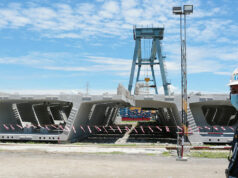THE GOVERNMENT may end up funding some components of the natural gas infrastructure as the required capital may be too large for a private company to undertake, an Energy official said.
“We believe that some portions of the infrastructure required to develop a downstream natural gas industry might have to be shouldered by the national government because the private sector might not be willing to undertake that investment,” said Leonido J. Pulido III, assistant secretary at the Department of Energy (DoE).
Mr. Pulido was referring to the transmission, distribution and supply of natural gas to power plant consumers — or what is called the downstream industry. He was reacting to proposed legislation at the Senate that seeks to develop that segment.
Introduced by Senator Francis G. Escudero, Senate Bill 765 calls for the development of the downstream natural gas industry, consolidating for the purpose all laws relating to the transmission, distribution and supply of the fossil fuel.
“What the Senate bill lacks would be to provide for some sort of funding mechanism for very critical, very large-scale projects such as pipelines that our third-party investors might not be willing to undertake,” Mr. Pulido said.
He also said that based on the DoE’s initial review of the proposed legislation, the department is recommending the inclusion of the development of the midstream industry or the importation of liquefied natural gas (LNG) in the bill.
He said the inclusion would provide an opportunity for the integration of the DoE’s department circular on the downstream natural gas industry, which was issued last year.
Mr. Pulido also proposed the provision of incentives not only to encourage investors to enter into the midstream portion of the natural gas value chain but also to sway existing petroleum-fueled facilities to convert to natural gas-fired power plants.
“We also would like to take that as an opportunity to put provisions that will address the growth of other sectors. Currently, the way it’s written, [the bill] focuses on power generation, and of course, the DoE wants to push for the use of natural gas in other sectors — transportation, industrial and so on,” he said.
In June 2017, Energy Secretary Alfonso G. Cusi said his department was looking at the construction of a common LNG receiving and distribution infrastructure, which he said could make the country an “LNG hub” for Southeast Asia.
He said the facility would cost around P100 billion for completion by 2020. The timeline should give the country enough lead time and safeguard it ahead of the anticipated depletion of the Malampaya gas find starting in 2024.
He said the facility would have an initial 200-megawatt (MW) power plant, storage, and liqeufaction and regasification units. The plant’s output is aimed to served the country’s economic zones, he added.
Mr. Cusi is in Japan this week to encourage natural gas companies in Japan to invest in the Philippines’ LNG hub project.
To date, natural gas from the Malampaya gas field off the coast of Palawan fuels five gas-fired power plants in Batangas province with a combined capacity of 3,211 MW.
Natural gas, said to be the cleanest fossil fuel, is usually transported through a pipeline, but if the deposit is large and the market is overseas, the gas may be liquefied for ease of shipping and moved via specialized tankers. Imported LNG is then regasified or reverted to its former state in the country of destination. — Victor V. Saulon



